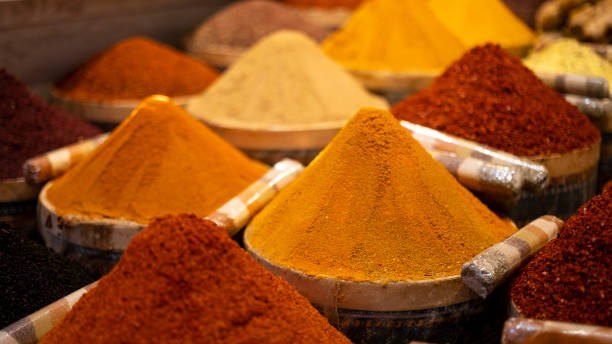When it comes to transforming ordinary ingredients into extraordinary dishes, spices are the unsung heroes of the culinary world. For centuries, these aromatic gems have been a vital part of cuisines worldwide, elevating flavors, colors, and textures in remarkable ways.
Spices have a rich history that dates back to ancient civilizations. The quest for new and exotic spices led explorers on daring voyages across oceans. These coveted ingredients were not only valuable for their culinary uses but also for their medicinal and preservative properties. From the trade routes of the Silk Road to the Spice Islands of Southeast Asia, spices have traveled the globe, influencing the cuisines they touched.
Spice Varieties and Flavor Profiles
Spices encompass a wide array of botanicals, from seeds and fruits to bark and roots. Each spice carries a unique flavor profile, from the warm, earthy notes of cumin to the fiery heat of chili peppers. Some, like saffron and vanilla, are prized for their subtle and floral qualities, while others, such as black pepper and paprika, deliver robust and pungent flavors.
Understanding the characteristics of different spices is essential for culinary artists seeking to create harmonious and balanced dishes.
The Spice Masters of India
Indian cuisine is renowned for its bold and complex flavors, and spices are at the heart of its culinary tradition. The vast and diverse subcontinent boasts a wide spectrum of spices, including coriander, cardamom, turmeric, and fenugreek. It’s not just the variety of spices but the way they are skillfully blended that defines the cuisine. Spices are often freshly ground and used in a harmonious combination known as a masala. The famous Indian curries, biryanis, and tandoori dishes owe their distinctive flavors to these spice blends.
The Saffron-Tinted Middle Eastern Cuisine
Middle Eastern cuisine is full of vibrant flavors, thanks to the use of spices like cumin, coriander, cinnamon, and saffron. These spices infuse dishes with rich and warm notes, creating unforgettable tastes that include shawarma, falafel, and baklava. Saffron, known as the world’s most expensive spice, lends its golden hue and floral aroma to dishes like paella and Iranian rice pilaf.
The Herbaceous and Bold Flavors of Mediterranean Cuisine
The Mediterranean region is celebrated for its healthy and flavorful cuisine, where spices like oregano, thyme, rosemary, and garlic play vital roles. While not as fiery as other cuisines, Mediterranean dishes are known for their balanced and herbaceous profiles. Olive oil, often infused with spices and herbs, is a hallmark of the Mediterranean diet and serves as the culinary canvas for dishes like Greek moussaka and Italian bruschetta.
The Intricacies of Asian Spice Blends
Asia boasts a stunning array of spices and spice blends, each with its distinct characteristics. Thai cuisine, for instance, relies on a combination of lemongrass, galangal, and Thai bird’s eye chili for its signature balance of sweet, sour, salty, and spicy flavors. In Chinese cuisine, the complex five-spice powder adds depth to dishes, while Sichuan peppercorns deliver a unique numbing sensation. Meanwhile, the spice blends of Japan, such as shichimi togarashi, accentuate the umami in ramen and sushi.
The Heated Passion of Latin American Cuisines
Latin American cuisine is known for its fiery and passionate use of spices. From the earthy cumin and smoky paprika in Mexican mole to the bold aji amarillo peppers in Peruvian ceviche, these spices are the heart and soul of Latin American dishes. Spices like allspice, annatto, and guajillo peppers are the key to the deep, sultry flavors found in dishes like Brazilian feijoada and Colombian ajiaco.
The Rise of Fusion Cuisine
As the world becomes more interconnected, fusion cuisine is on the rise. Chefs are blending spices from various regions to create innovative and exciting new dishes. The marriage of cumin and soy sauce in Mexican-Asian fusion tacos or the infusion of Indian spices into French cuisine showcases the versatility of spices and the endless possibilities for flavor exploration.
The Health Benefits of Spices
Spices not only tantalize our taste buds but also offer a range of health benefits. Many spices, such as turmeric and ginger, possess anti-inflammatory and antioxidant properties. Cinnamon is believed to help regulate blood sugar levels, while garlic and chili peppers may support heart health. Exploring the medicinal attributes of spices is a fascinating area of culinary and scientific inquiry.
Spice and Sustainability
The demand for spices on a global scale has raised concerns about sustainability and ethical sourcing. Some spice crops, like vanilla, are susceptible to diseases and climate change. Ensuring a stable supply chain while respecting the environment and the communities that produce these spices is an ongoing challenge in the culinary world.

